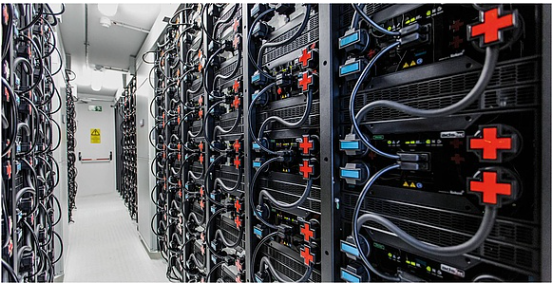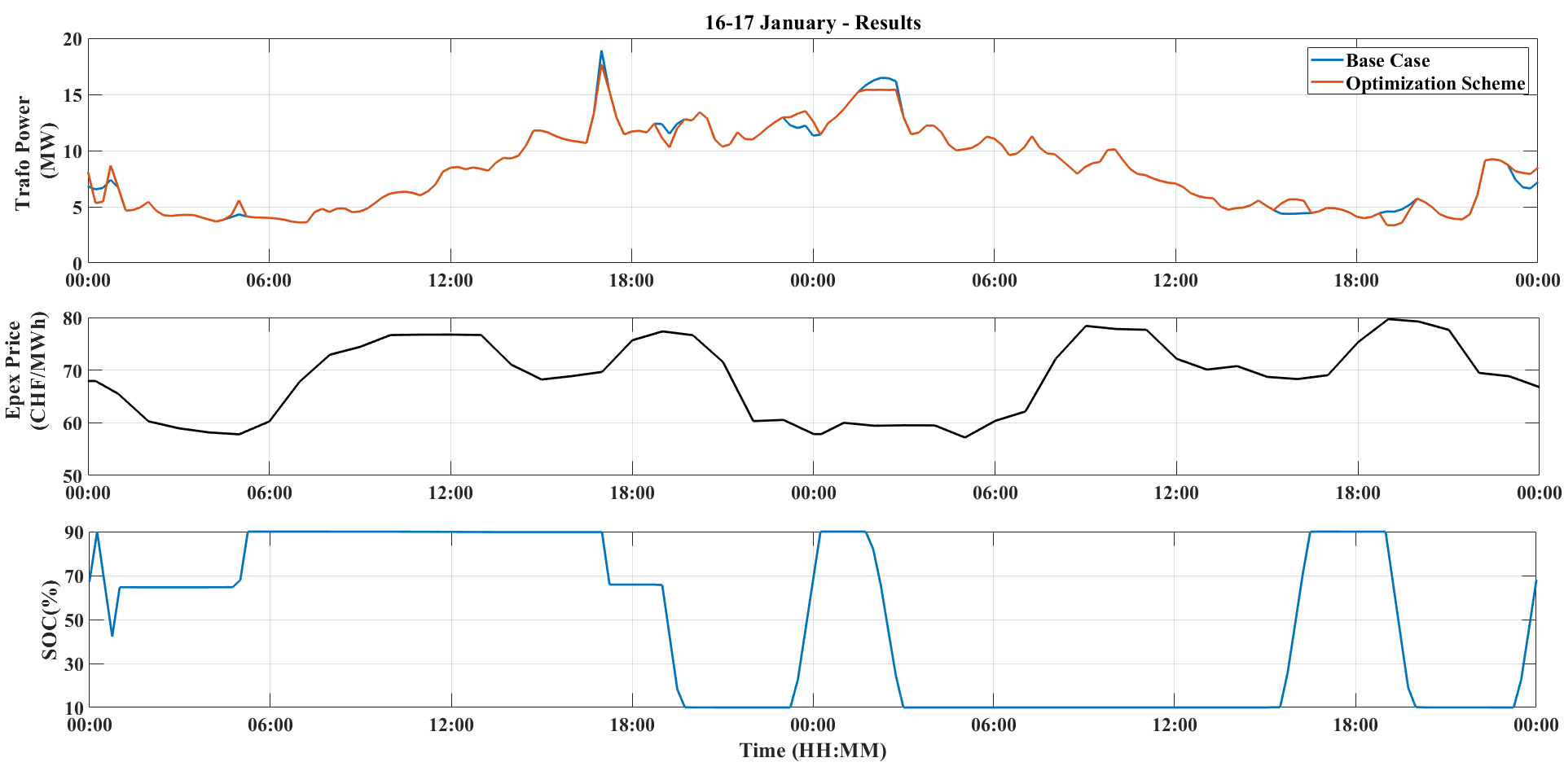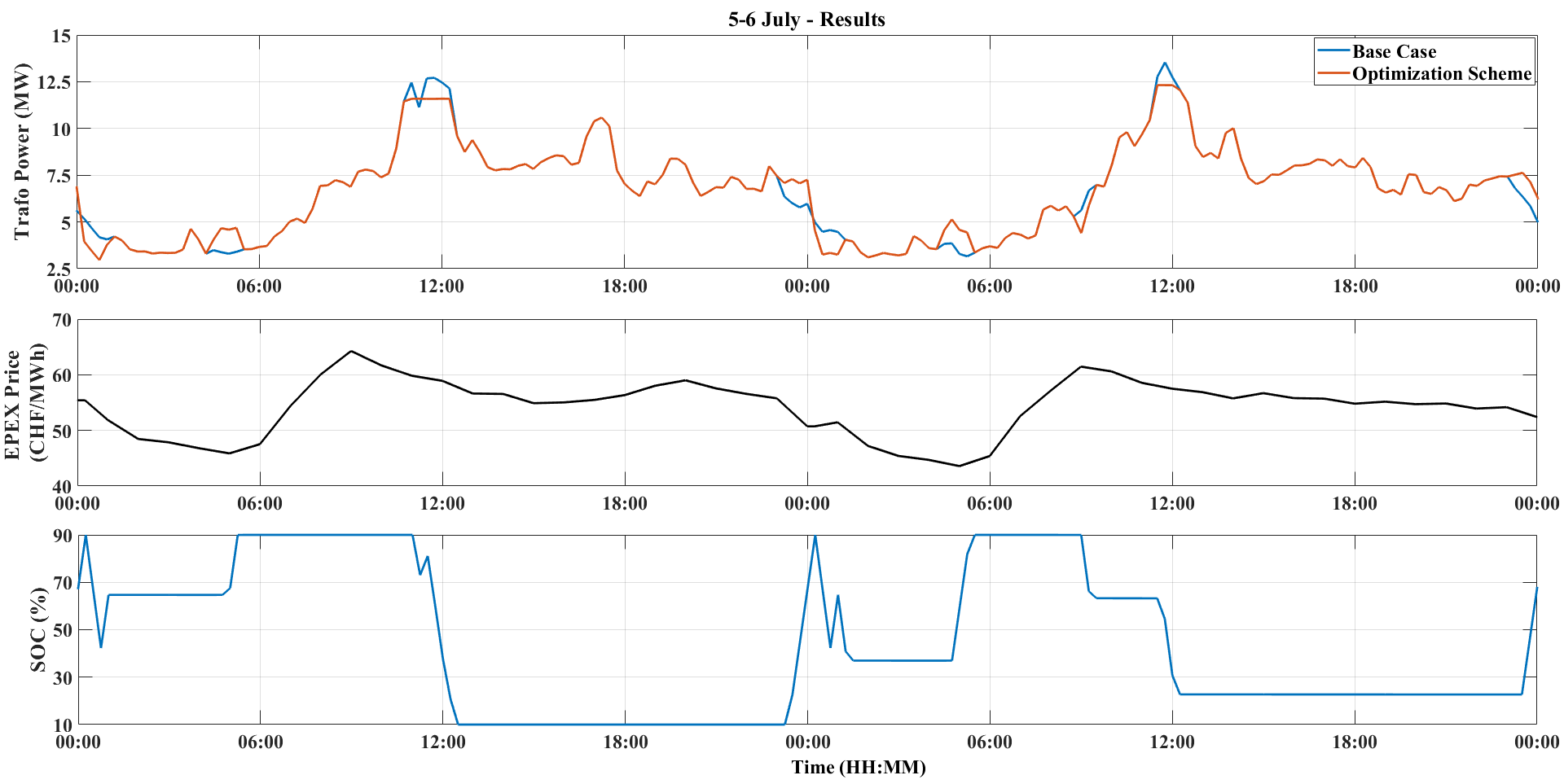
SONDER - Service Optimization of Novel Distributed Energy Regions
The project focuses on the operation of a battery energy storage system installed in a distribution grid using optimization schemes and load forecasting tools.

Figure 1: Representation of electric power distribution network in Arbon city
Background
The Swiss Distribution System Operator Arbon Energie AG was motivated to install a central battery energy storage system (BESS) in the distribution grid of Arbon. Albeit the BESS provides ancillary and operation services, there is a discussion for additional services mainly for the higher exploitation of BESS potential, while increasing the economic viability of BESS project. In particular, the BESS will be used to flatten the power demand profile by storing energy during off-peak periods and releasing it during peak load periods. So far, load forecasting is carried out for energy trading purposes, however, more accurate predictions are needed to reduce the power peaks and operate the BESS properly.

Figure 2: Interior of a representative BESS container (Ref. Arbon Energie AG)
Goals
- Evaluation of the flexibility potential gained by the application of the proposed optimization schemes for the BESS operation.
- Assessment of advanced graph-based machines learning techniques combined with clustering methods for the improvement of load forecasts in different levels of Arbon distribution network.
- Combination of the optimization scheme with the most suitable forecasting method to eliminate the forecasting errors and to maximize the profits gained through peak power shaving when operating properly the central BESS unit.
Results
From the evaluation of a centralized BESS control scheme for winter and summer months, the following conclusions were extracted:
- The BESS can achieve considerable monthly cost reductions of about 10’500 CHF mainly owing to peak power shaving.
- Peak power shaving of about 1.22 MW can be achieved regardless of the peak power value.
- The optimization scheme can reduce both global and local maximum powers of the load demand curve.
- No unexpected peak power increases were noticed during the simulated months when applying the centralized control scheme.
- The focus should be given on peak power shaving, since the other objectives of the optimization scheme have slight variations that can be omitted.
 Figure 3. Results of January when applying the optimization scheme: (a) Power on secondary side of distribution transformer 110/17kV, (b) EPEX spot Price for Switzerland, (c) State of Charge.
Figure 3. Results of January when applying the optimization scheme: (a) Power on secondary side of distribution transformer 110/17kV, (b) EPEX spot Price for Switzerland, (c) State of Charge.

Figure 4. Results of 5-6 July when applying the optimization scheme: (a) Power on secondary side of distribution transformer 110/17kV, (b) EPEX spot Price for Switzerland, (c) State of Charge.
Project information | |
|---|---|
Client | |
Project leadership and execution | Università della Svizzera italiana (USI), Advanced Learning and Research Institute (ALaRI) |
Research partner | FHNW Institute of Electric Power Systems, Siemens Schweiz AG, Arbon Energie AG |
Duration | 36 months (April 2019 – March 2022) |
Funding | SFOE |
Project team | USI: Cesare Alippi, Slobodan Luković, Andrea Cini |
